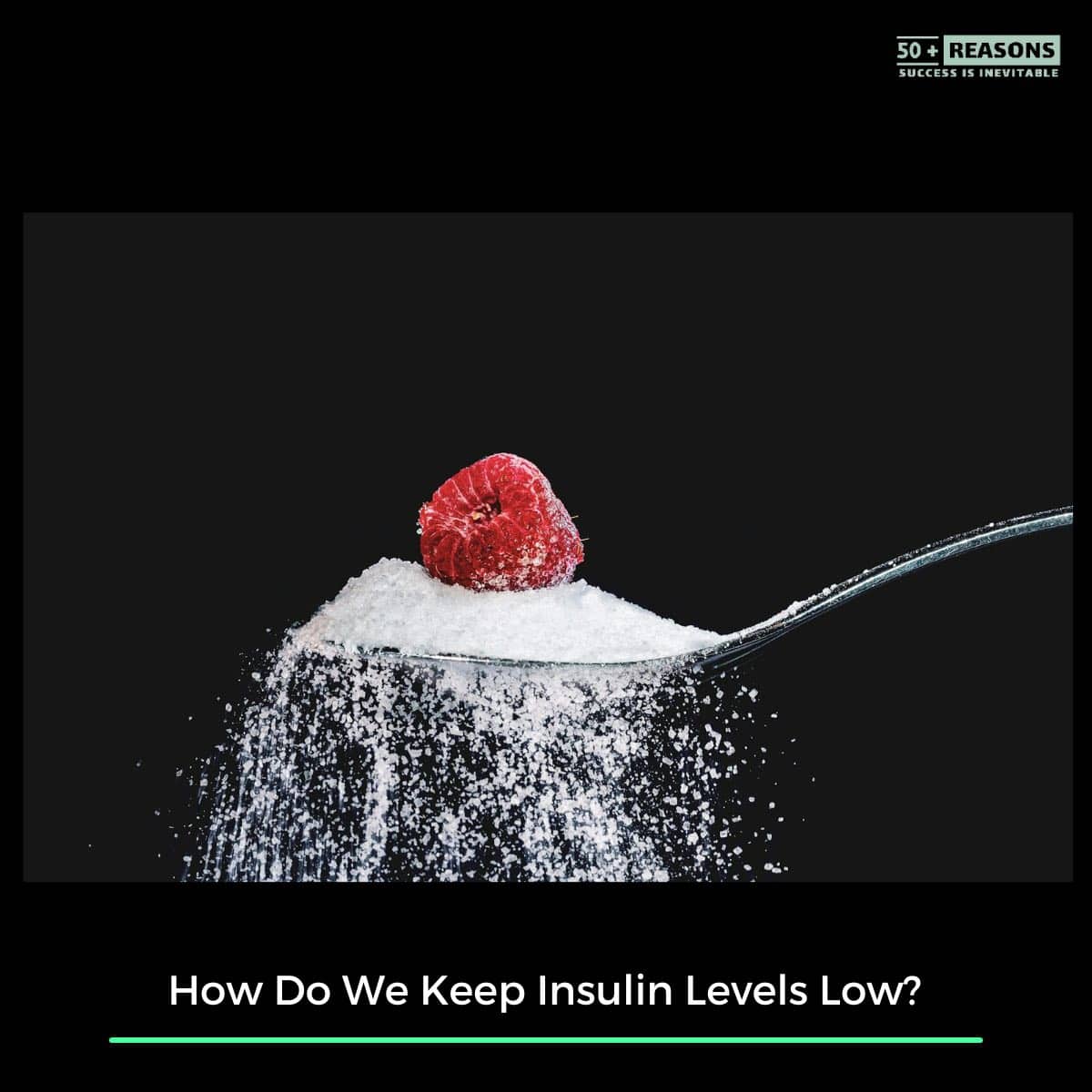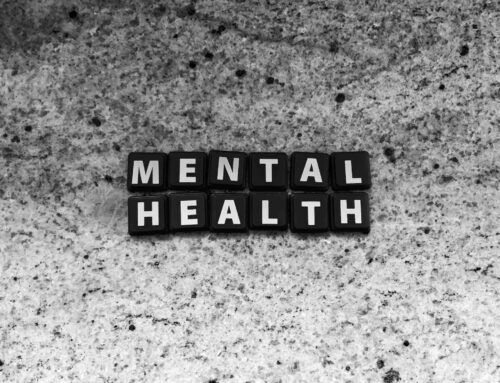You’re not alone if you struggle to control your blood sugar levels. Millions of people around the world are affected by high blood sugar, which can lead to serious health complications if left unchecked. But there is hope. I’m here to share my journey of how I lowered my blood sugar from a dangerously high level of 315 to a more healthy 103 in just three weeks. And the best part? It didn’t involve any medication or extreme measures. These are just four simple lifestyle changes that anyone can incorporate into their daily routine. Sugar Free Diet: How I Lowered My Blood Sugar from 315 to 103 in 3 Weeks.
Are you ready to lower your blood sugar and take control of your health? Let’s dive in.
My Journey from a Blood Sugar of 315 to 103 with a Sugar Free Diet
Struggling with high blood sugar levels can be overwhelming and scary. I know this because I’ve been there. Just a few weeks ago, my blood sugar was a staggering 315 (17.5), well above the healthy range. Sitting in the doctor’s office, realizing I had high blood sugar for the first time, was shattering. I was terrified of the potential health complications that could arise from such elevated levels. I was also scared witless by my doctor telling me I was a Type 2 diabetic and needed insulin injections and oral medication for the rest of my life.
The doctor asked if I had any symptoms of diabetes. Not knowing what diabetic symptoms could be, I thought about a few things that had changed in the last few months.
Symptoms of Type 2 Diabetes:
- I was very thirsty at night and then needed to get up at least once in the night to go to the toilet.
- I had got some prescription glasses three months previously as I was battling to read, especially in low light.
- I was feeling more and more lethargic and couldn’t quite place why.
- Mentally, I was battling to feel positive and upbeat. I dragged myself out of bed and didn’t feel particularly excited about the day ahead.
- I had developed some dark spots on my bald head – I even went to the dermatologist to get them checked out.
- In my morning shower, I was getting some tingling in my fingers.
- I had put on a fair amount of weight around my belly.
She (the doc) explained that these were all symptoms of diabetes. I spent the rest of that day, deep into the night (and most days since), researching Type 2 diabetes and its causes.
I have come to one conclusion. This conclusion is the reason I have been able to drop my blood sugar levels so quickly. And the conclusion is this:
Type 2 diabetes is caused by HIGH INSULIN levels.
Everything else is a symptom of high insulin levels. My blood glucose, eye problems, skin changes, fatigue, mental wellness, tingling fingers, and even my waist size all stem from high insulin levels.
So, to cure my newly diagnosed Type 2 diabetes, I knew I had to lower my insulin levels.
The Superfecta: How to Lower Your Blood Glucose

The Key to Dropping Insulin and Your Weight
I was determined to take control of my health and find a way to lower my blood sugar without medication. Even more importantly, figure out how to reduce my insulin levels. I knew that relying on medication wasn’t the solution for me. I wanted to find a more sustainable and natural approach.
So the very next day, I immediately and religiously started what I call the Superfecta (the Superfecta is a type of wager where the bettor, in order to win, must pick the first four finishers of a race in the correct sequence). So, this system relies on four quadrants with a correct sequence. These four quadrants are:
- Diet (what I can and can’t eat)
- Intermittent Fasting (when I can and can’t eat)
- Exercise
- Sleep and stress
I knew if I could break everything down into four simple quadrants, I could master this disease. What I didn’t expect was just how quickly my health started to improve.
Step 1: Diet. The Powerful Impact of a Sugar Free Diet on Blood Sugar Levels

Impact of a Sugar Free Diet on Blood Sugar Levels
This word doesn’t mean I went on a ‘diet.’ It meant I needed to change how I ate for the rest of my life. Find a way to eat better that is sustainable and pleasurable.
My journey towards a healthier blood sugar level began that day with a simple yet powerful realization – my diet played a crucial role in my blood sugar and high insulin levels. It was the MOST crucial quadrant and factor to master so I could get better. I read that many people reversed Type 2 diabetes with diet alone. There was hope.
The impact of diet on blood sugar levels and high insulin levels cannot be overstated. What we put into our bodies directly affects our blood glucose levels and then our insulin levels. Making conscious choices about our diet can have a powerful impact on managing blood sugar levels.
First and foremost, I made a commitment to eliminate sugar intake and carbohydrates from my meals. Instead, I focused on whole foods, including plenty of salads, proteins, and healthy fats. The impact was immediate. I noticed my blood sugar levels quickly decreased as I nourished my body with the proper fuel.
Sugar and carbohydrates are your two enemies. Especially sugar combined with refined carbohydrates. That donut, apple strudel, or jelly babies are killers – literally.
I focussed on eating more of a ketogenic diet. Very low-carbohydrate diet (no potatoes, rice, pasta, whole grains, breads, etc.) and no sugar.
Instead, eat lots of protein like meat, yogurt, nuts, and many fats. This is not a low-fat diet. It is a high-fat diet, and I eat a lot, and I mean I eat a lot. Don’t worry about counting calories or worry about how much food you eat. Eat until you are full. This is key to sustainability. You won’t be able to sustain an eating plan if you have to restrict calories. Nobody can in the long run.
Seek out fats like nuts, healthy oils (see below), and high-fat dairy from free-range animals that haven’t been fed antibiotics.
The Science of Our Hormones and The Link to Diabetes

A sugar free diet
I have learned that the old model of calories in and out is just not accurate. Our hormones are more important. Dr. Benjamin Bikman explains it so well in this video.
Our insulin is responsible for opening our cells to allow them to take up glucose in the blood. Our cells need insulin for energy. We would die without insulin. If you have Type 2 diabetes, you have a problem with high insulin—or insulin resistance. We have been eating foods that contain too much sugar for years. Our bodies have been trying to get rid of the glucose in the blood and sending it into our cells. Eventually, our cells can’t take any more. So, our insulin goes up to force more glucose into our cells. It all comes to a horrible breaking point when our cells can’t take up any more glucose, regardless of the insulin levels. This is when we become diabetic or pre-diabetic.
Type 2 diabetes mellitus has horrible outcomes:
- Heart and blood vessel disease. Diabetes is associated with an increased risk of heart disease, stroke, high blood pressure, and narrowing of blood vessels, a condition called atherosclerosis.
- Nerve damage in limbs. This condition is called neuropathy. High blood sugar over time can damage or destroy nerves. That may result in tingling, numbness, burning, pain, or eventual loss of feeling that usually begins at the tips of the toes or fingers and gradually spreads upward.
- Other nerve damage. Damage to nerves of the heart can contribute to irregular heart rhythms. Nerve damage in the digestive system can cause problems with nausea, vomiting, diarrhea, or constipation. Nerve damage also may cause erectile dysfunction.
- Kidney disease. Diabetes may lead to chronic kidney disease or end-stage kidney disease that can’t be reversed. That may require dialysis or a kidney transplant.
- Eye damage. Diabetes increases the risk of severe eye diseases, such as cataracts and glaucoma, and may damage the blood vessels of the retina, potentially leading to blindness.
- Skin conditions. Diabetes may raise the risk of skin problems, including bacterial and fungal infections.
- Slow healing. Left untreated, cuts and blisters can become serious infections, which may heal poorly. Severe damage might require toe, foot, or leg amputation.
- Hearing impairment. Hearing problems are more common in people with diabetes.
- Sleep apnea. Obstructive sleep apnea is common in people living with type 2 diabetes. Obesity may be the main contributing factor to both conditions.
- Dementia. Type 2 diabetes seems to increase the risk of Alzheimer’s disease and other disorders that cause dementia. Poor blood sugar control is linked to a more rapid decline in memory and other thinking skills.
It literally affects everything.
So, How Do We Keep Insulin Levels Low?

How Do We Keep Insulin Levels Low? A sugar free diet.
It is essential to eliminate processed sugars and most carbohydrates from our meals. Insulin is a nutrient-sensing hormone; it starts to rise when we eat. Our insulin increases abnormally if we eat foods that put a lot of glucose in the blood. If we eat foods that spike glucose quickly, we also get a spike in insulin levels.
So, at all costs, eat foods that do not irregularly push up the glucose and insulin in your blood. Unlike carbohydrates and sugar, proteins and fats do not significantly impact insulin levels.
Many ‘healthy’ foods were my downfall. I would drink a few glasses of fruit juice each day. I thought it was a healthier option than a Coke, especially because I mixed half the glass with water. Now I know that fruit juice is just as bad as a Coke or other sugary drinks. Even when diluted, fruit juice causes untold complications in our bodies. Lunch would be what I thought was a healthy granola and yogurt. I now know that granola is full of carbohydrates and has many added sugars – I just didn’t read the ingredients. Hidden sugars are in everything. If it has the following in the ingredients, then it should not be in our dietary intake:
- It has syrup (examples: corn syrup, rice syrup)
- The word ends in “ose” (examples: fructose, sucrose, maltose, dextrose)
- “Sugar” is in the name (examples: raw sugar, cane sugar, brown sugar, confectionary sugar)
- Other examples of added sugar include fruit nectars, concentrates of juices, honey, agave, and molasses.
Take a Sugar Free Diet Seriously
Sugar consumption and carbohydrate consumption are killing us. Apparently, 88% of all Americans are metabolically unhealthy. A high intake of these 2 ‘foods’ is slowly debilitating us and will ultimately kill us. The cherry on the cake, so to speak, is a diet rich in a combination of refined carbohydrates and sugar. These foods are causing elevated blood glucose levels and insulin, obesity, and a growing visceral fat problem. The visceral fat we collect from high insulin levels produces chemicals and hormones that can be toxic to the body. Visceral fat produces more toxic substances than subcutaneous fat, so it is more dangerous. Even in thin people, having visceral fat carries a vast range of health risks.
At all costs, educate yourself on what raises insulin levels, and eat foods that have little effect on blood glucose.
Step 2: Intermittent Fasting. An Unexpected Tool in Glucose Level Management

Intermittent Fasting - An Excellent Tool to Lower Insulin and Blood Sugar Levels
Check out Dr. Jason Fung for all the science behind intermittent fasting. Simply put, as we know, blood glucose levels rise when we eat, and then insulin levels go up. Blood glucose levels can drop quickly, but it takes a while for insulin levels to drop. So, if we don’t eat as often, insulin levels get a chance to fall back to normal.
If insulin levels are low, our cells will release the glucose they have stored away for the body to use as energy. We will start to lose weight. Our body even begins to heal itself (autophagy) if we fast for long enough. Intermittent fasting is simply an incredible tool (after correcting your diet) to lower insulin levels. This is one of the main tools I use to drop blood sugar levels.
The most common method I use is the 16/8 method, where you fast for 16 hours and restrict your eating to an 8-hour window. During fasting, your body can rest from digestion and focus on other essential functions, like regulating blood sugar.
I have even moved to the odd 24-hour fast and alternate-day eating as my body gets used to fasting. I have seen an 11-pound drop in body weight in the last three weeks. Insulin secretion and glucose tolerance can be improved incredibly quickly with fasting.
Is Fasting Healthy?
People worry about fasting being healthy. If you look at all the major religions in the world, Islam, Judaism, and even Christianity, they all teach about fasting. It has been done for thousands of years and is perfectly healthy. The word breakfast comes from breaking your fast each morning after sleeping. Your body fasts every time you are sleeping.
I have spoken to others who rightly suggest that fasting is not for you if you have Type 1 diabetes, you are pregnant or have an eating disorder. It would be best if you did the research yourself before committing to fasting.
The benefits of intermittent fasting are numerous. I also experienced increased energy levels, improved mental clarity, and better overall well-being. It’s incredible how much our eating patterns affect our body and mind.
Step 3: The Crucial Role of Regular Exercise for Maintaining Healthy Blood Glucose Levels

A sugar free diet and exercise lowers insulin
Regular exercise is a crucial component of maintaining healthy blood sugar levels. When I started my journey to lower my blood sugar, I knew that exercise had to be a part of my daily routine. And boy, did it make a difference.
Exercise helps increase insulin sensitivity, which is essential for managing blood sugar levels. When you exercise, your muscles use glucose for energy, which helps to lower blood sugar levels. It also helps your body become more efficient at using insulin, which is important for regulating blood sugar.
I incorporated a combination of strength training and walking into my routine. This variety has kept me motivated and engaged and provides me with a well-rounded approach to managing my blood sugar.
Aerobic exercises, such as walking (with a few sprints thrown in), improve cardiovascular health and burn calories. These exercises can help you maintain a healthy weight, which is crucial for managing blood sugar levels.
Incorporate Resistance or Strength Training
Strength training exercises, such as weightlifting or resistance training, are essential for building and maintaining muscle mass. Having more muscle can help your body use glucose more effectively and improve insulin sensitivity. Aim for two or more weekly strength training sessions, targeting all major muscle groups (don’t skip leg day; these muscles soak up glucose). Dr. Benjamin Bikman says each ounce of muscle you add to your body will help drain away glucose. Build muscle!
Flexibility exercises, such as stretching or yoga, can help improve circulation and reduce stress, positively impacting blood sugar control.
Remember, consistency is vital when it comes to exercise. Find activities that you enjoy and make them a regular part of your routine. Start with small goals and gradually increase the duration and intensity of your workouts. And always listen to your body – if something doesn’t feel right, don’t push through it.
Step 4: Sleep and Stress. A Silent Key Factor in Lowering High Blood Sugar Levels

Sleep and Stress with a sugar free diet are the Fourth Step to Lowering Insulin
Sleep and stress play a crucial and often overlooked role in lowering blood sugar levels and glucose metabolism. When we think about managing our blood sugar, food intake and exercise are often the first things that come to mind. But getting quality sleep is just as important for maintaining optimal blood sugar control.
During sleep, our bodies undergo important restorative processes, including regulating hormones responsible for blood sugar control. When we don’t get enough sleep or experience poor sleep quality, our hormones become imbalanced, leading to increased insulin resistance, higher blood sugar levels, and weight gain.
What the Research Says
Research has shown that consistently getting enough sleep can significantly improve blood sugar control, especially for patients with Type 2 diabetes, and positively impact weight management. A lack of sleep has been associated with higher fasting blood sugar levels and an increased risk of developing insulin resistance and type 2 diabetes. On the other hand, prioritizing quality sleep can lead to improved insulin sensitivity and lower blood sugar levels.
Establish a consistent sleep schedule and create a relaxing bedtime routine to ensure you’re getting enough sleep. Avoid electronic devices and stimulating activities before bed, as these can interfere with sleep quality. I cut out the TV after dinner.
There are many resources on sleep improvement.
Stress is another matter. We live in a stressful world and have stressful lives. I am battling to find ways to control stress, but my general well-being and more exercise are helping with stress levels.
Making Lifestyle Changes for a Healthier Tomorrow

Making Some Lifestyle Changes like a sugar free diet for a Healthier Tomorrow
Now that you’ve learned about my journey from a blood sugar level of 315 to a healthy 103, you can see how changes in 4 areas can start the process of healing. Diet, Intermittent fasting, Exercise, and Sleep.
Remember, our fight is to lower insulin. Everything must be geared toward this war. It is the most important thing we have – our health.
The effect of sugar and the consumption of sugar must be stopped. Carbohydrates should only be eaten with significant consideration. Get rid of unhealthy oils like:
- Soybean oil
- Canola oil
- Corn oil
- Peanut oil
- Sunflower oil
- Safflower oil
- Cottonseed oil
- Grapeseed oil
Start cooking and dressing foods with healthy oils, as seen in articles like this. Food cooked with these harmful oils threatens your blood glucose and insulin. It is easier to have suitable weight control if you understand the science of insulin and its effects on weight.
In Conclusion:
Lastly, I’d like to encourage you to learn more. There is an absolute abundance of incredible people spreading the good word. To my shame, it has taken a crisis to find them. The doctors listed above and the resources below are excellent starting points for understanding insulin and its effects on your body. These people have helped me. Perhaps they can help you. Good luck.
In no particular order: Dr. Annette Bosworth, Dr. Mindy Pelz, Dr. Rob Lustig, Dr. Sean O’ Mara, Dennis Pollock, and Dr. Perlmutter.
My Real Job
If it weren’t for sitting in the doctor’s chair, I would never be writing about diabetes. My real love is options and how understanding options can make us all wealthier with very little work. Check out the FREE options course below.
You never know; you could be living both healthier and wealthier.
Free
Great for Beginners
What’s Included
Learn how Options work.
Start to take charge of your savings






[…] high-fat dairy products, can also be beneficial. Read the ingredients of everything you buy – read here for help on what to look for in the ingredient […]